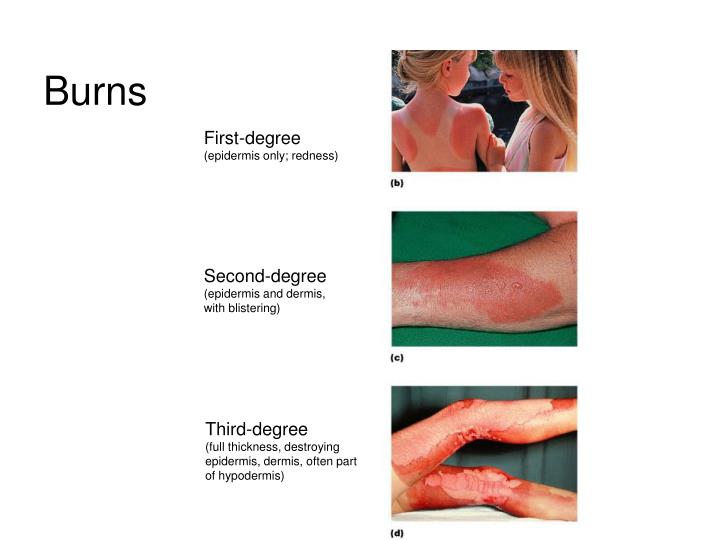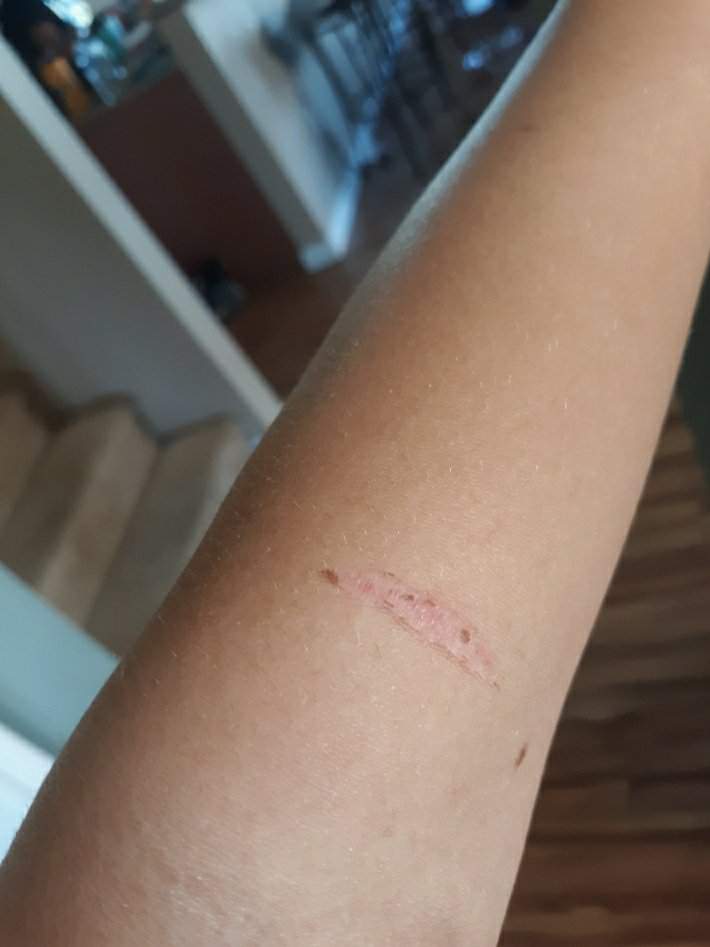

If a person has 15 percent or more of their total body surface area burned, they’ll need at least one peripheral line to provide IV fluids. The depth of dermis lost is a function of the temperature and the duration of the exposure.

Third-degree (full thickness) burns Third-degree burns destroy the epidermis and dermis. The burn site appears red, blistered, and may be swollen and painful. when the burned areas involve key areas of the body, such as the hands, feet, genitalia, face, or major jointsĪnother example of how a provider may use the rule of nines is to determine how much IV access is needed. Second-degree (partial thickness) burns Second-degree burns involve the epidermis and part of the dermis layer of skin.Other circumstances where a burn center should treat the wounds include: If a person has burns on 10 percent of their body surface area or greater, a specialized burn center should treat their wounds. Providers also know that burns that exceed 30 percent of a person’s body can be potentially fatal, according to the National Institutes of Health. The rule of nines can also relay to a medical team receiving the patient how serious the injury is. Doctors will also use the estimated body surface area burned to determine how much fluid to administer. Unlike a superficial burn, you may form blisters and notice wetness due to fluid leaking from the damaged skin. In partial-thickness burns, or second-degree burns, the injury extends below the topmost layer of skin.
Second degree burn skin#
The skin appears red and is painful to the touch, but there’s no blistering. According to the National Institutes of Health, burns that are greater than 20 to 25 percent of total body surface area require significant intravenous (IV) fluids. A superficial, or first-degree burn, is like a sunburn. This makes providing fluids vital to helping a person maintain their total body water. As a result, they’ll lose a significant amount of body water. Electrical burns (including lightning injury) Chemical burns. Burns to face, hands, feet, genitalia, perineum and major joints. Second and third degree burns greater than 20. When a person experiences a second-degree burn or worse, the protective layer of skin is destroyed. Second and third degree burns greater than 10 TBSA in patients younger than 10 years and older than 50 years. This includes the amount of fluid replacement and degree of care a person needs. second-degree burns: blisters and some thickening of the skin third-degree burns: widespread thickness with a white, leathery appearance There are also fourth-degree burns. A medical provider can use calculations from the rule of nines in several ways.


 0 kommentar(er)
0 kommentar(er)
